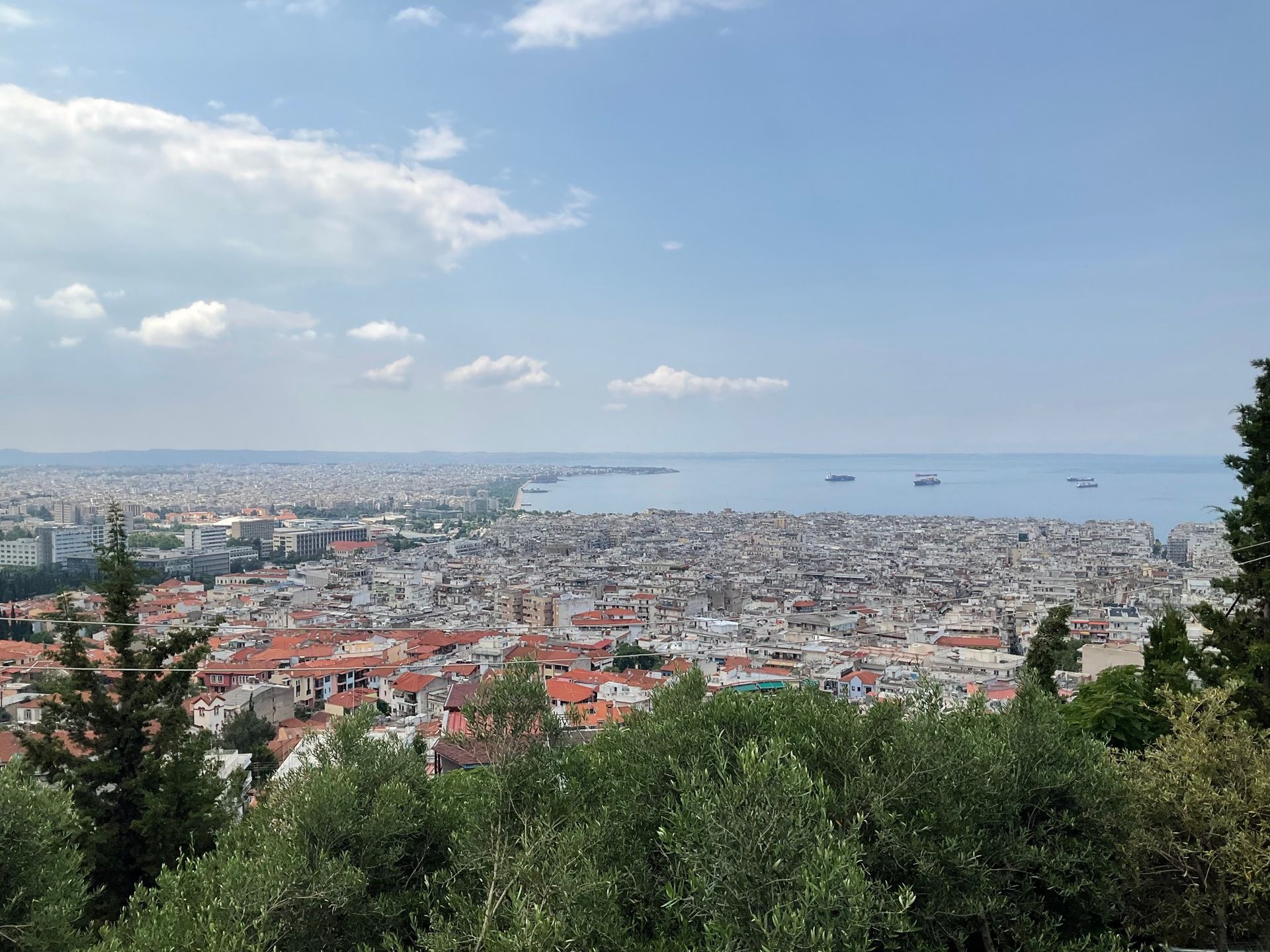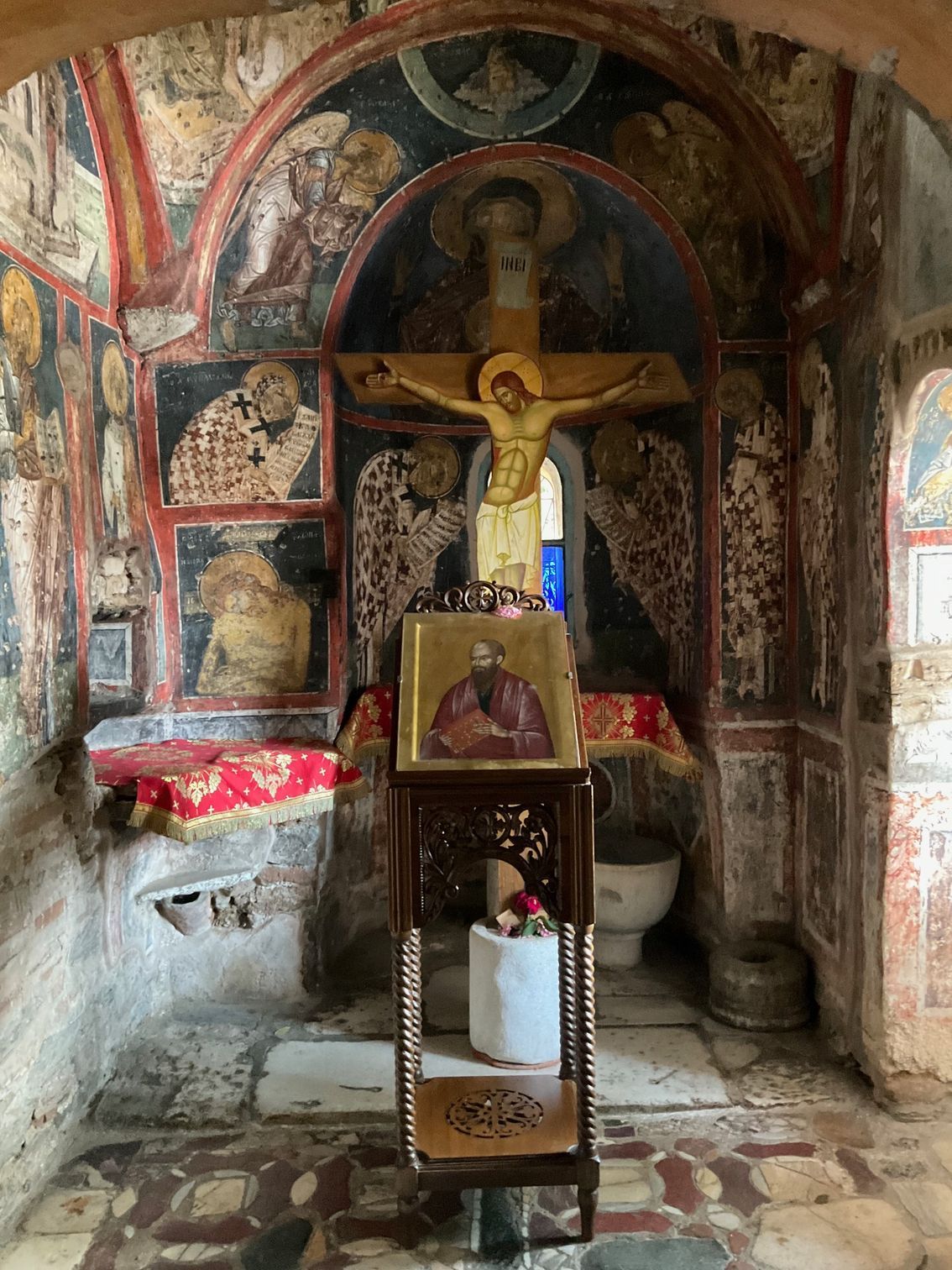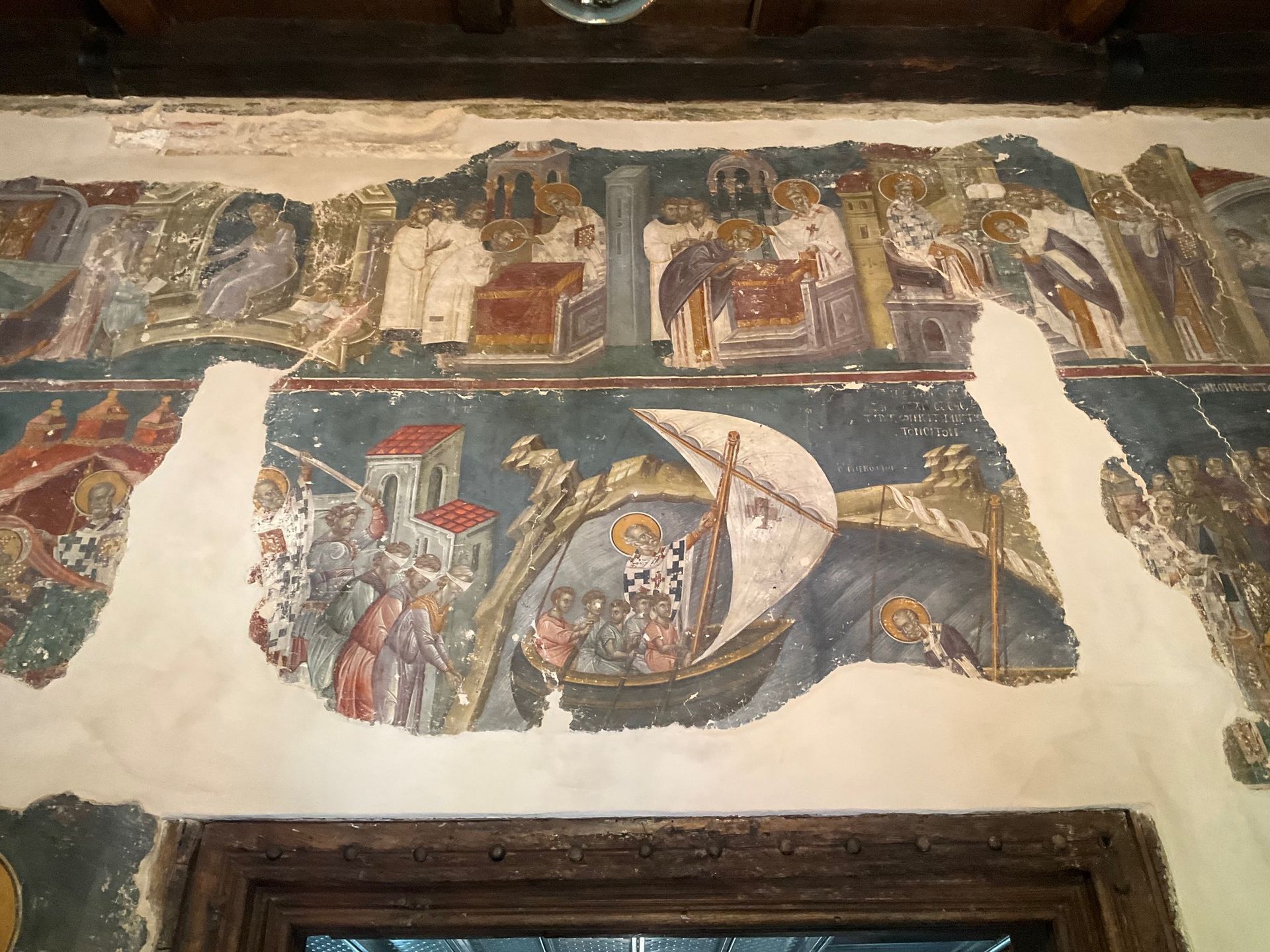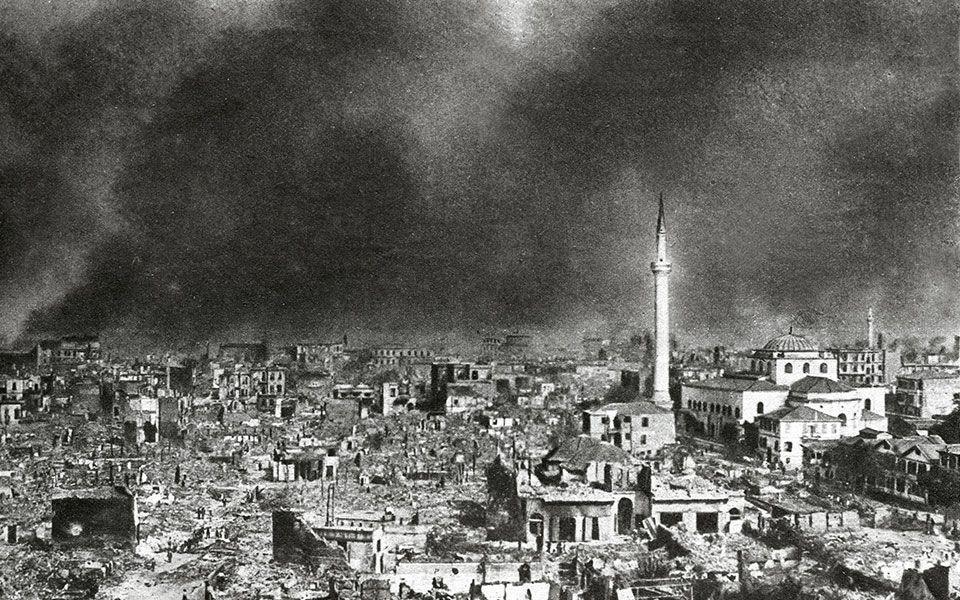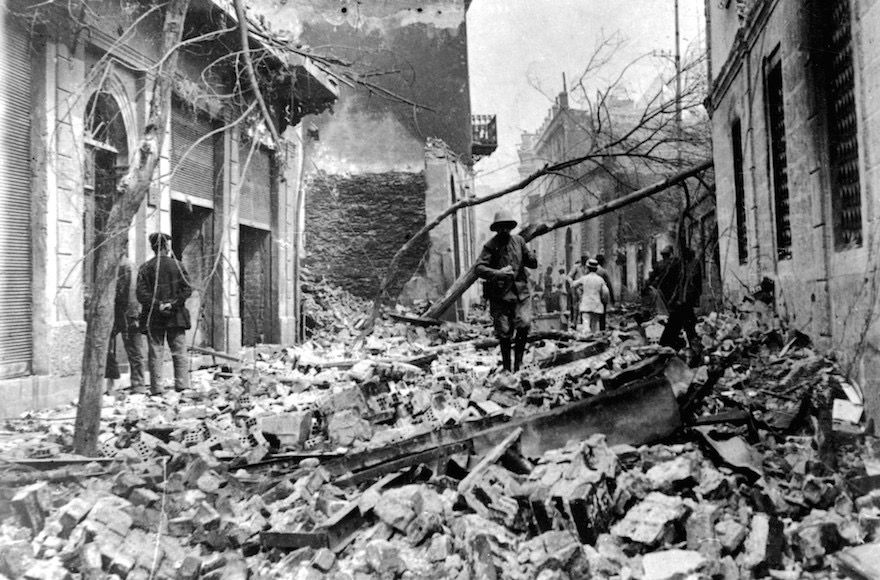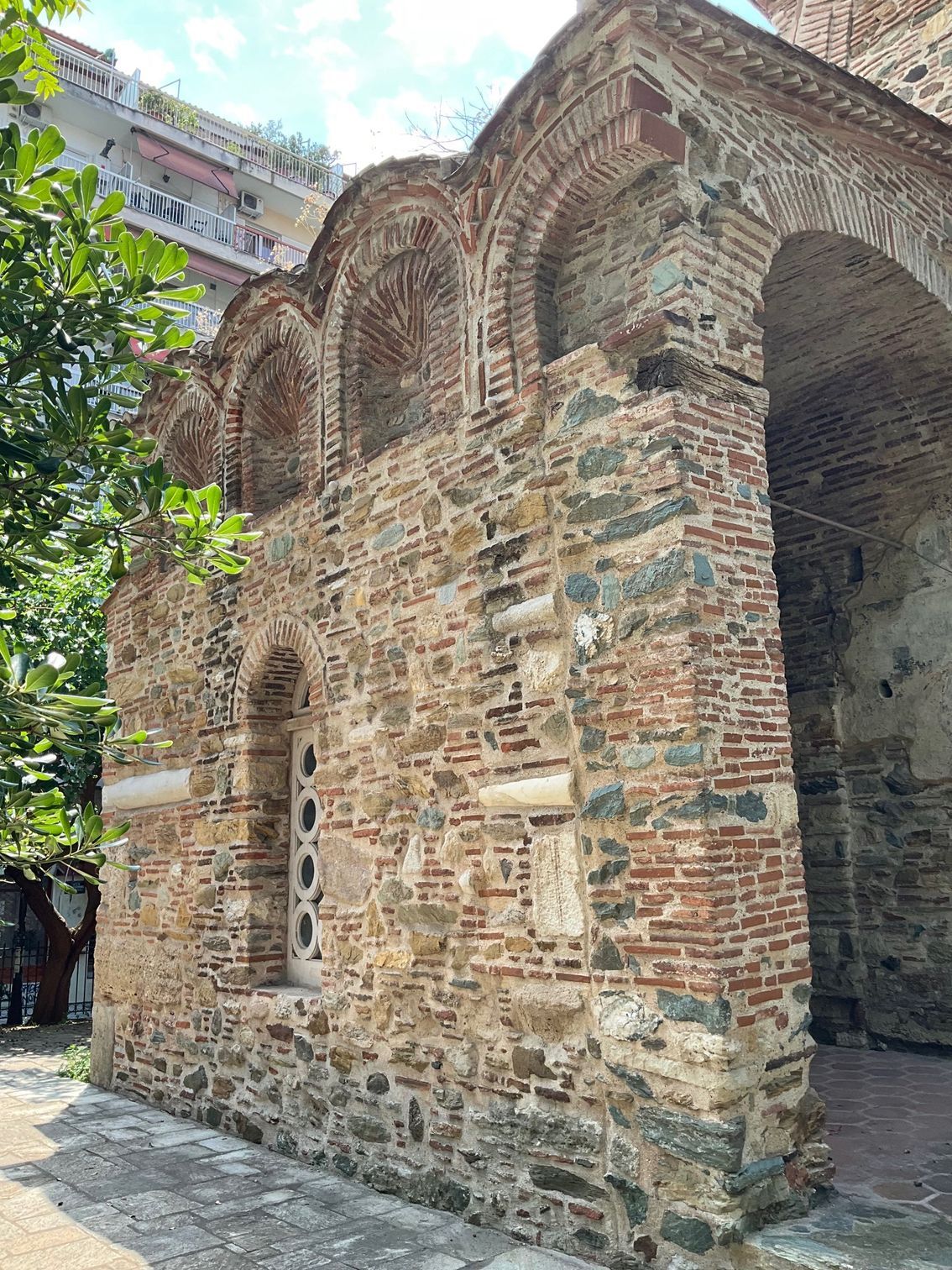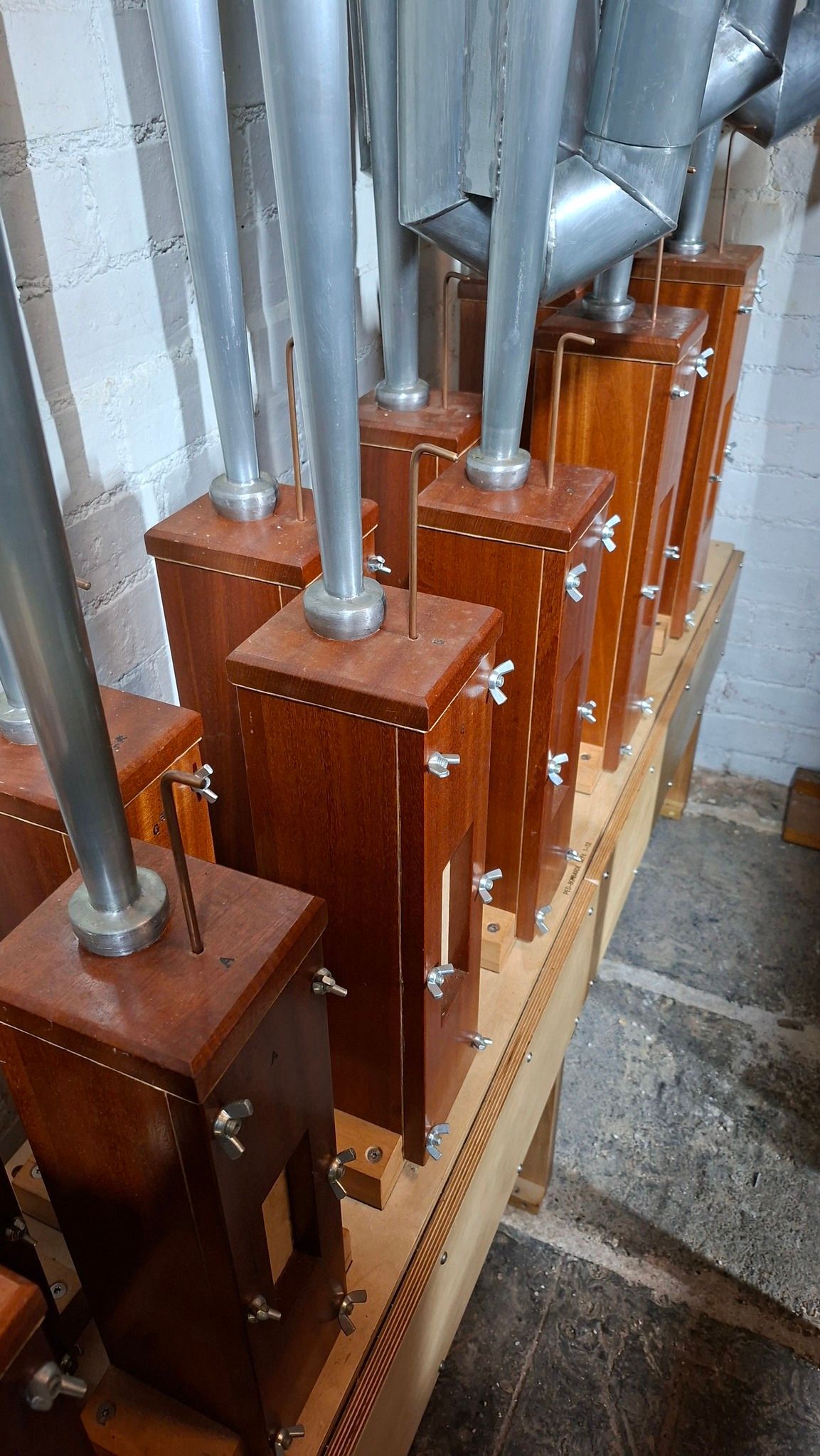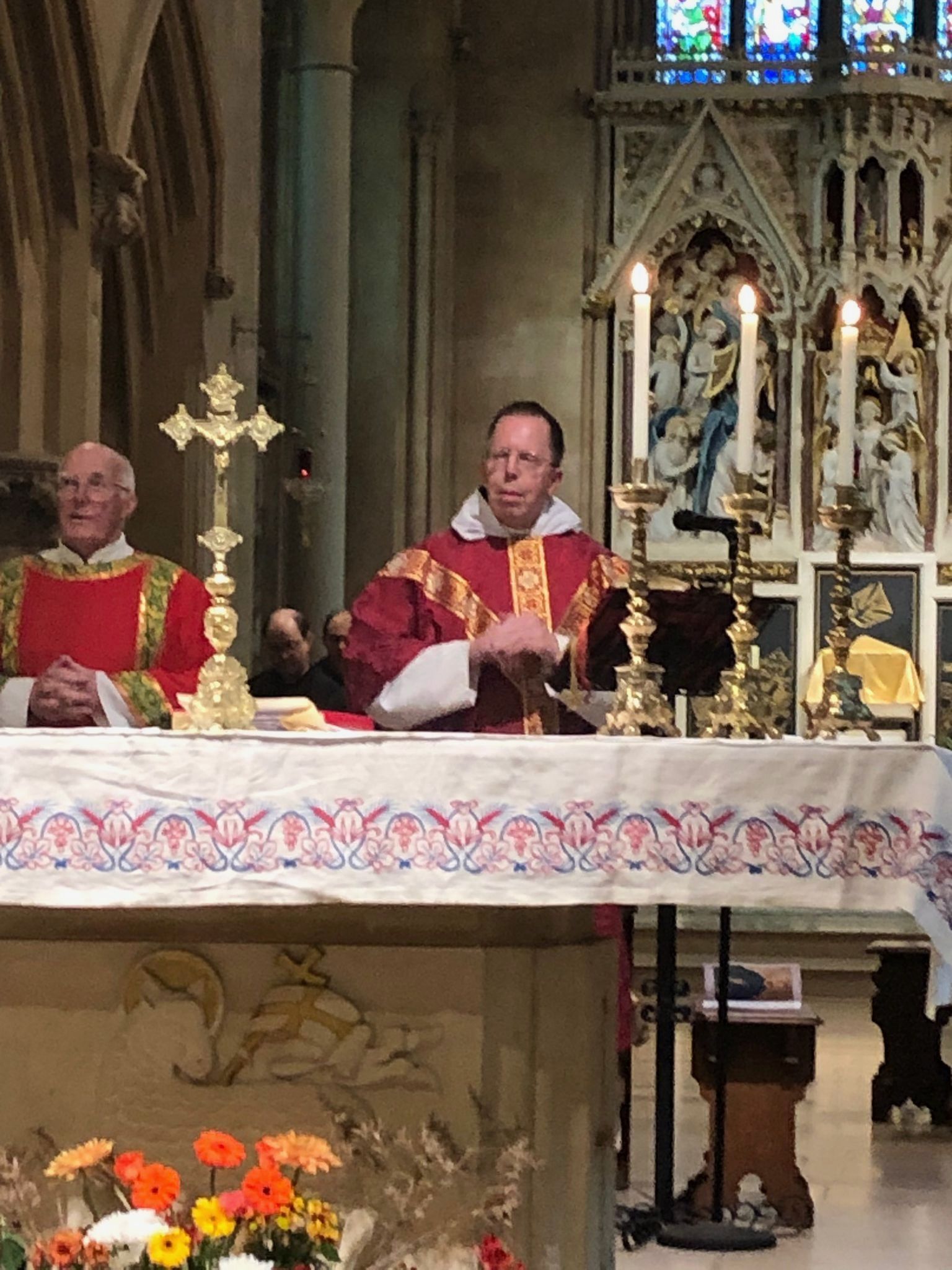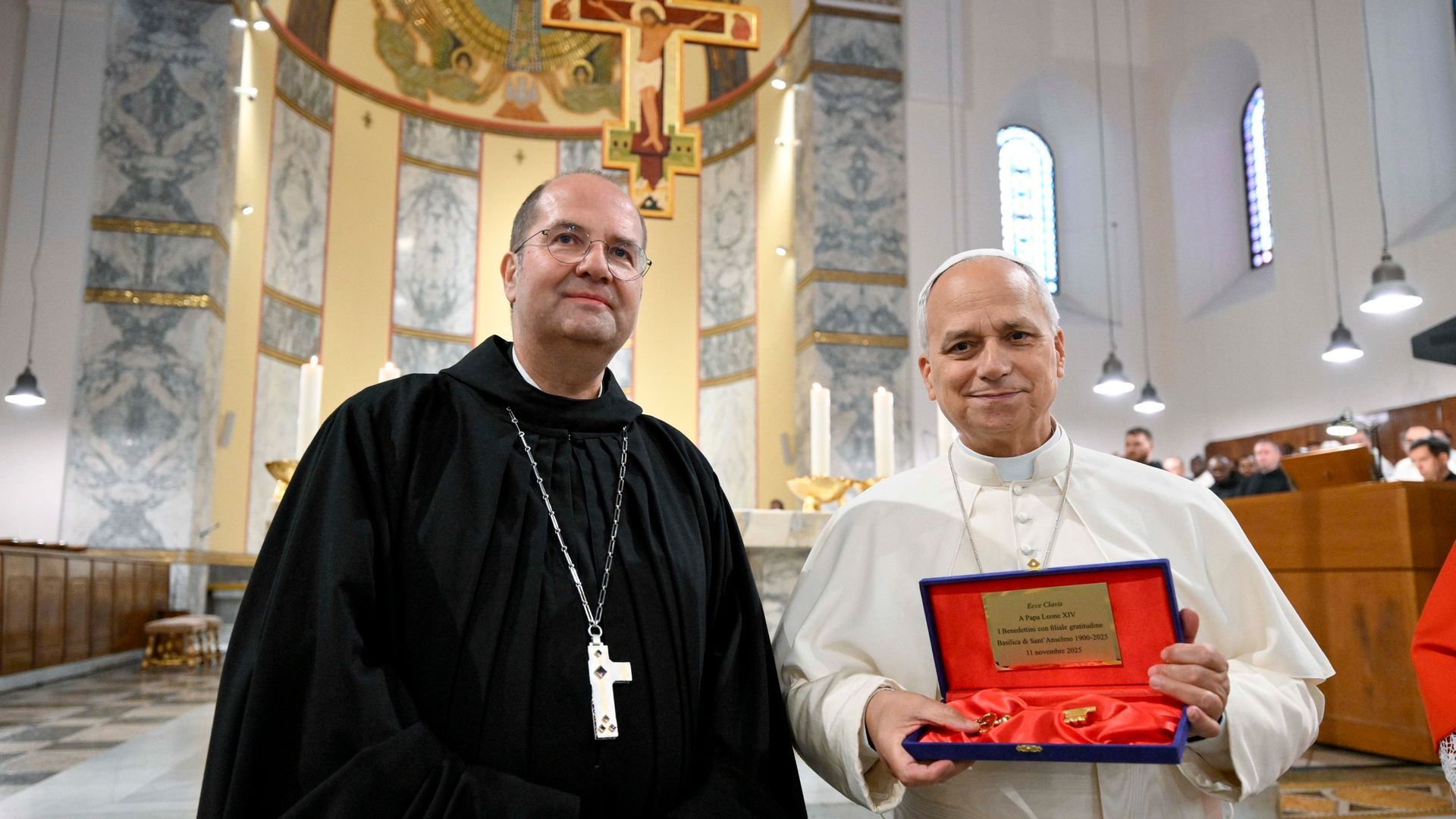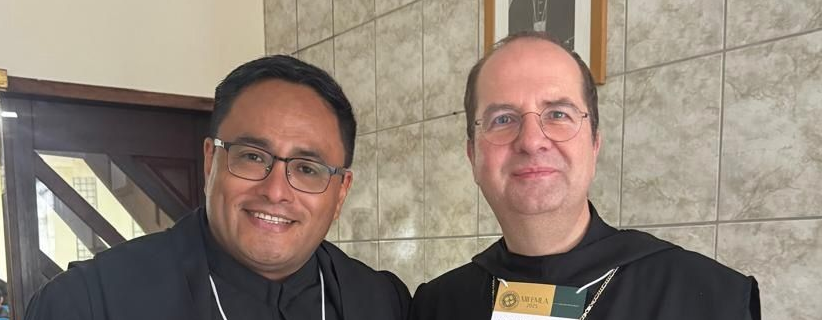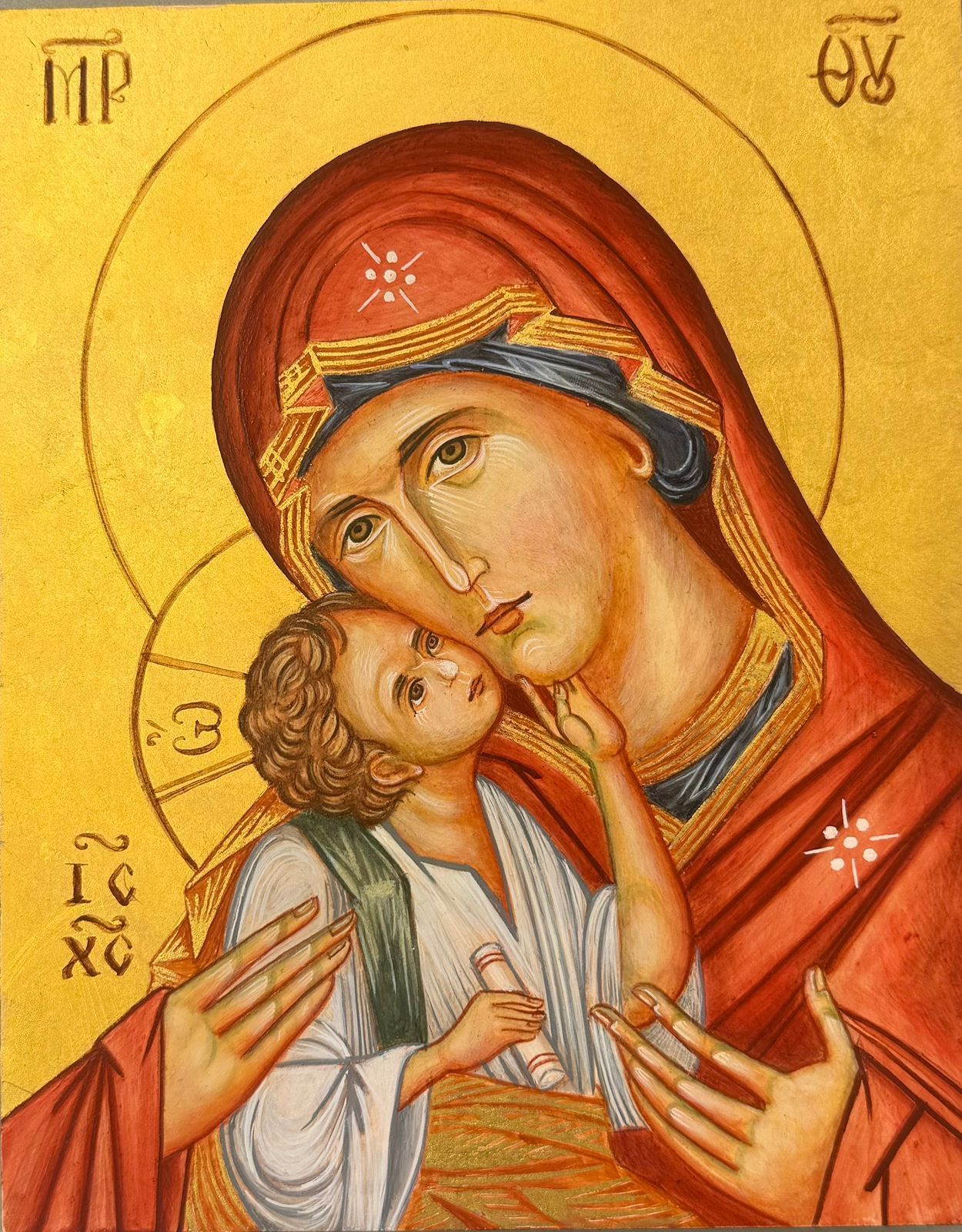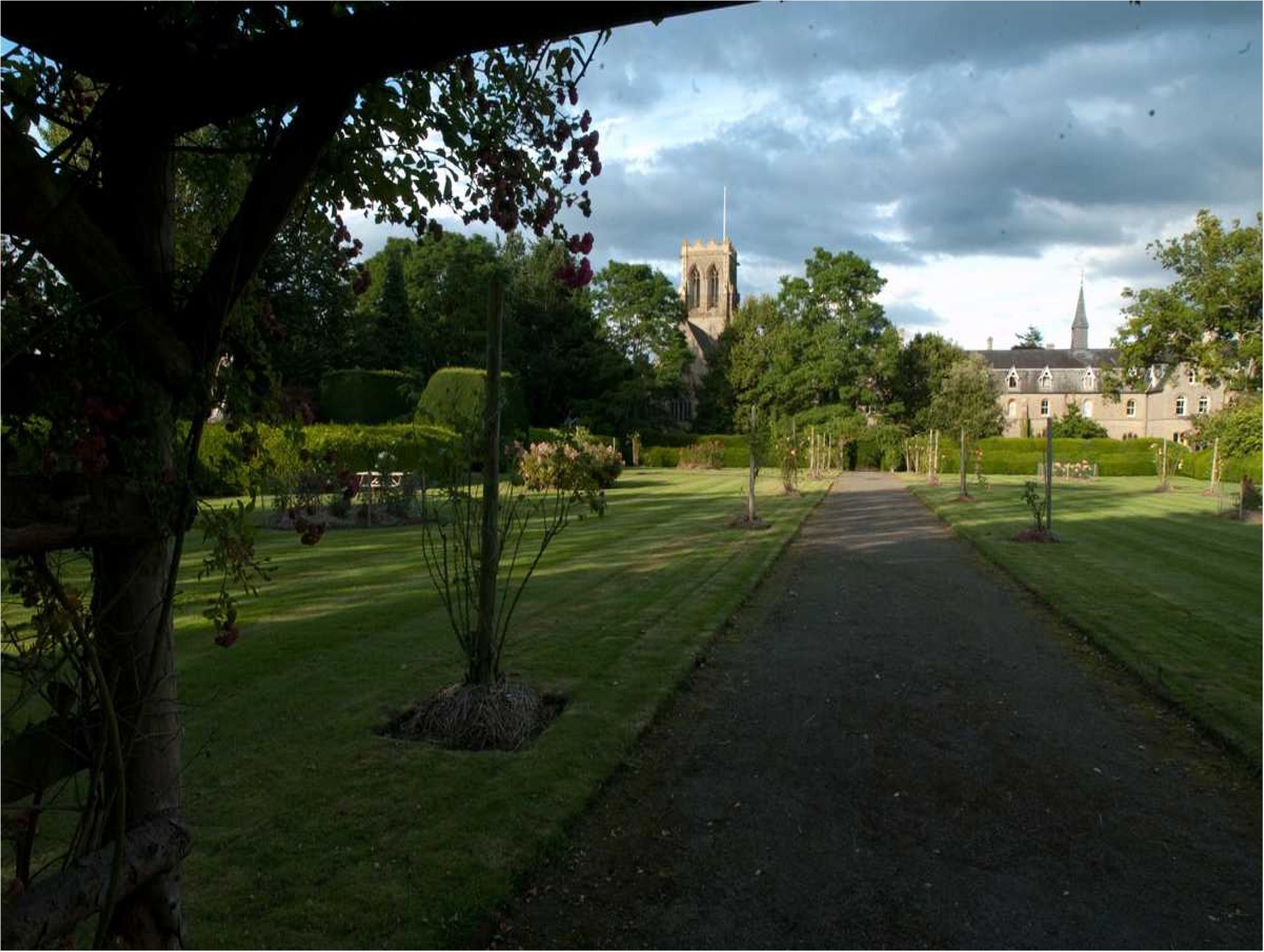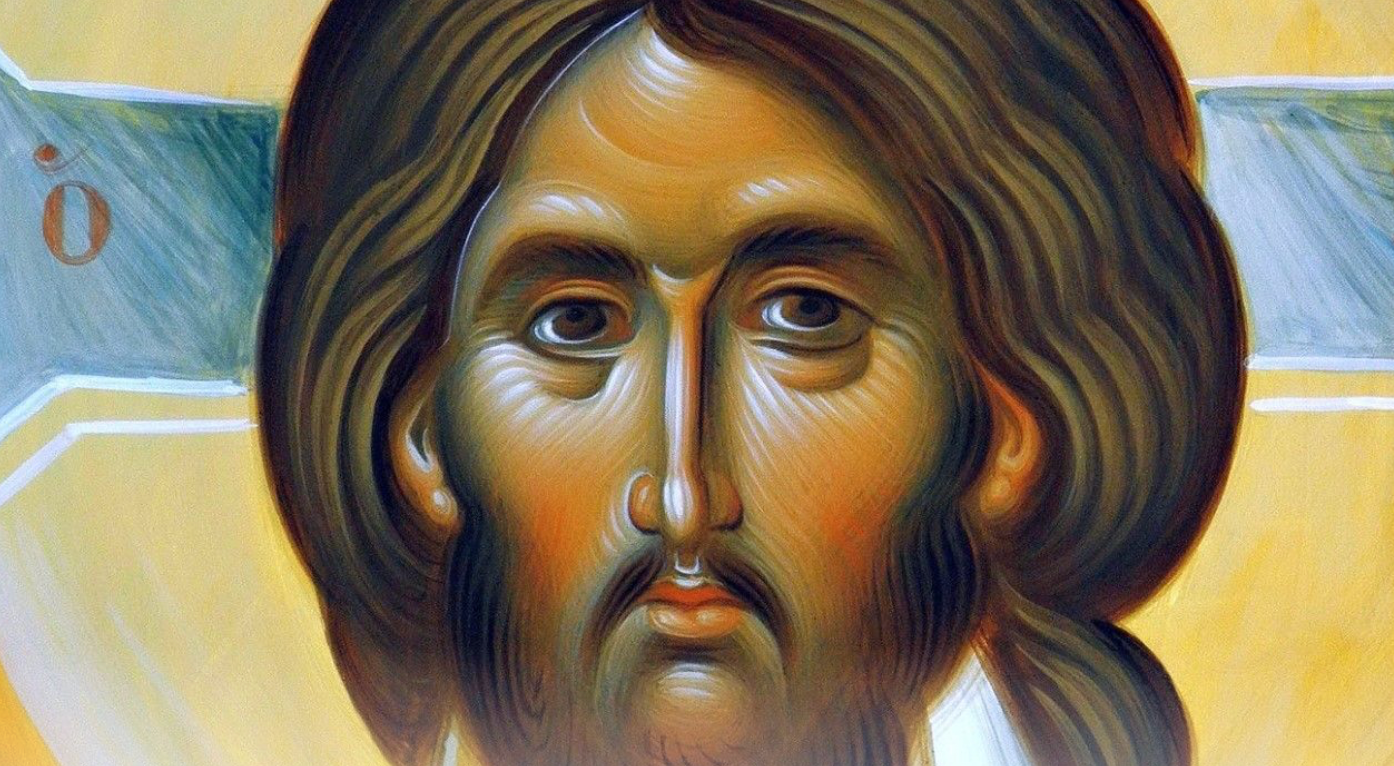Message of Abbot Paul - Tuesday 6th June 2023
Abbot Paul • June 6, 2023
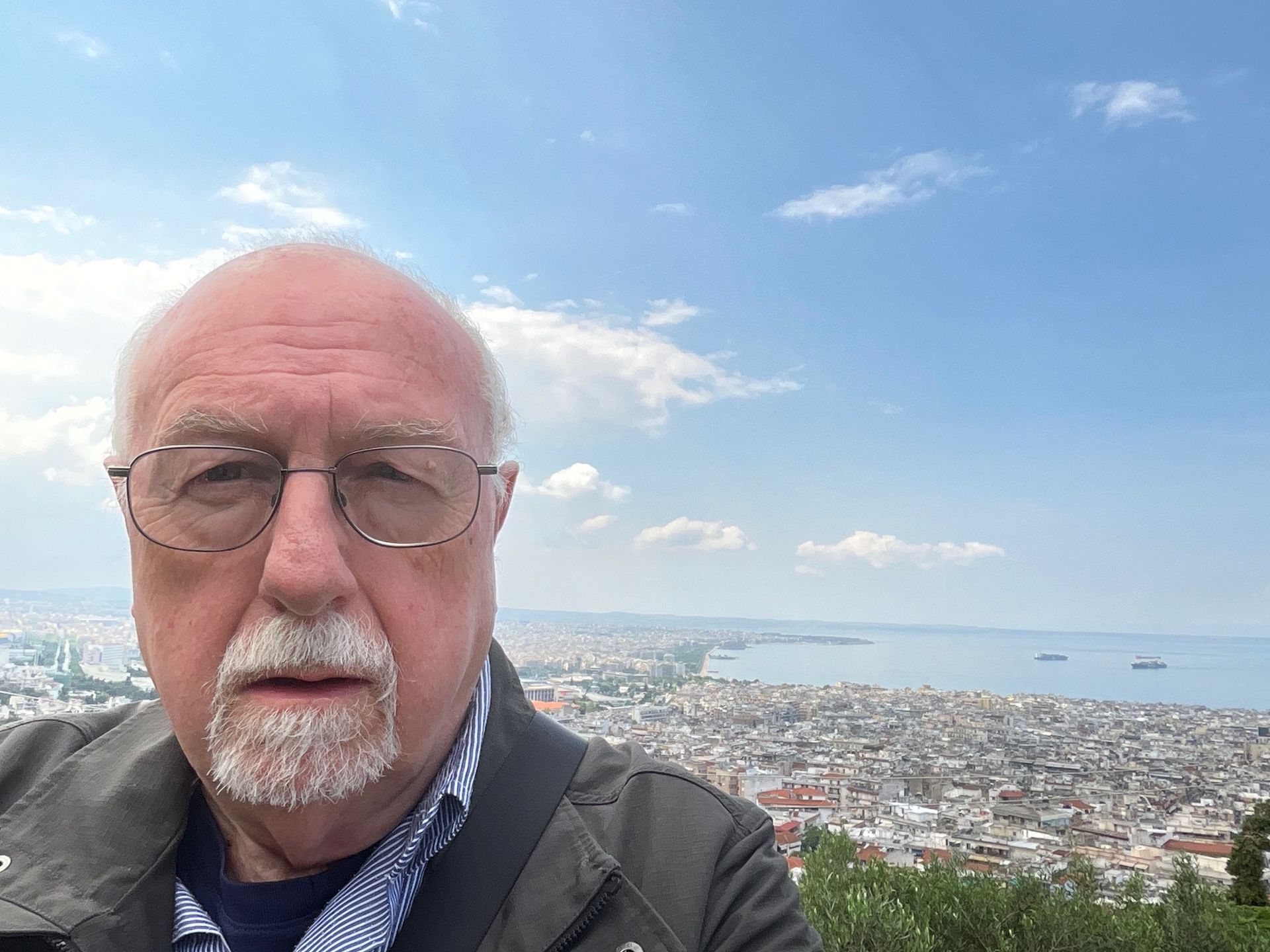
Yesterday was an unusual day as it included a routine visit to the hospital, before Covid an annual event, as they like to keep track of me after my cancer operation 14 years’ ago. Hence I was up well before 5am, although today was a bank holiday, Pentecost Monday, in fact. As we were down in the centre, we decided to visit a few of the many historic churches of Thessaloniki, a city with a fascinating history. It’s interesting to note the large number of tourists who now visit the city from all over the world. We bumped into many today.
We began in the heart of the upper town, beside the city walls, at the Moni Vlatadon, a large monastic complex dating back to Byzantine times. Many churches and monasteries were built or rebuilt in 14th century, a period of great religious renewal in Eastern Christianity. Think of St Gregory Palamas, Archbishop of Thessaloniki, and St Simeon the New Theologian. A favourite spot of mine here is the small chapel of St Paul, where my patron saint is said to have spent days and nights in prayer. In the main church as baptism was taking place in the Romanian language.
We then moved on to the church of St Nikolaos Orphanos, a small building in a beautiful rose garden and for me one of the most memorable and nostalgic places in the world. Like all the churches of Thessaloniki, it was turned into a mosque in the Ottoman era and its wonderful icons and frescos either destroyed or badly damaged. It’s dedicated to St Nicholas, probably the most popular saint in Greece.
On the way there we passed by some Byzantine baths, which you could easily mistake externally for a church.
Finally, I visited the church of St Panteleimon, Pantaleon in English, from which the word pantaloon is derived. Another church rebuilt in 14th century and originally part of a monastic complex, it’s now beautifully restored but surrounded by tall department blocks. I love the brickwork and the reuse of Roman columns. Thessaloniki was an important city of the Roman Empire, hence St Paul’s visit and long stay there, and there are as many Roman as ancient and Byzantine Greek monuments to see and enjoy. Sadly the great fire of 1917 destroyed much of the old city. Thessaloniki was very much a Jewish city: it had 17 synagogues. Kamel Ataturk, founder of modern Turkey, was born here. It was a city where Muslims, Jews and Christians lived in peace and harmony. If you’re interested I could recommend a few books on the history of the city, as I’ve often repeated, one of the most interesting and beautiful places on earth.

